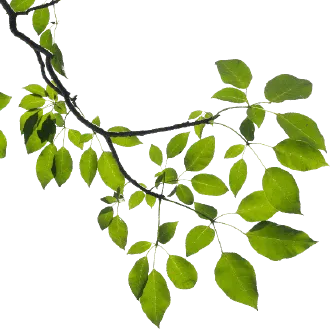你的电线被树枝缠住了?你检查得很好。在维多利亚州,电力线净空要求受到重视,而且不仅适用于大型基础设施。
不同的理事会允许您修剪的内容(以及修剪的时间)会有所不同。有些理事会允许您自行处理。另一些则需要表格、许可证,或者需要足够的耐心。难怪人们会感到困惑。
本指南将为您一一解读。我们将帮助您了解您所在的地方适用哪些规则,需要注意哪些事项,以及如何保持安全。如果您不想在梯子和繁文缛节上浪费时间,Trav's Tree Services 可在墨尔本提供合格的电力线清理服务。

什么是电力线以及为何需要清除电力线
电力线将电力从电网输送到家庭、企业和整个社区。它们沿着街道、穿过后围墙,有时甚至直接越过您的房产。有些是高压输电线。其他则是低压线路,为您的街道供电。
无论大小,它们都有一个共同点:需要远离树木。长得太近的树枝可能引发火灾,在暴风雨中导致线路瘫痪,甚至造成严重伤害。这不仅关系到安全。它关系到每个人的电力供应。
现有的清理规则就是为了防止这些风险。这些规则规定了植被与输电线的距离,并根据输电线的类型、当地的火灾风险以及土地的管理者而有所不同。
如果有些东西看起来已经太近了,或者您认为正在发生损坏,请查看我们的指南,了解如何报告电线上的树木。
谁负责保持电线畅通?
责任取决于树木的生长位置和附近的线路类型。
如果树木生长在您的私有财产上,并且侵占了连接到您家的电线,那么您就有责任保持树木的畅通。这包括预约定期检查,以及在任何东西太靠近时聘请合格的树艺师。
在街道边或公园等公共土地上,通常由当地议会或配电公司负责清理。公用事业公司也会对主要电线进行定期修剪,以降低停电或丛林火灾的风险。
如果您不确定谁负责处理某棵树,请先联系当地议会。您也可以查看您的电费账单,找到您的分销商,或使用维多利亚州能源安全查询工具来了解详情。
最棘手的是弄清谁该负责什么。为了方便大家,我们在 "电线附近树木的修剪责任人 "指南中提供了一份完整的明细表。

按议会地区划分的树木修剪规定
地方议会规则为何重要
在维多利亚州,《电力安全法》规定了植被与电线距离的基本规则。其中包括最小间隙距离、检查要求以及降低丛林火灾风险的缓解策略。但这只是问题的一部分。
大多数地方议会会在此基础上增加自己的层级。这些可能包括树木保护覆盖、特定许可要求或季节性限制--尤其是在火灾高危期。这意味着在一个郊区允许的行为,在另一个郊区可能会被罚款。
要了解您居住地的适用情况,最好的第一步是确定您的地方议会。
理事会执行什么样的规则?
以下是议会关于植被和电力线清理的指导方针中经常出现的内容:
- 受保护或重要树木覆盖 (VPO):如果您的树木被列入名录或受到保护,在修剪之前可能需要获得理事会的批准。
- 许可证要求:有些理事会要求修剪或移除树木必须获得许可,即使是出于安全原因。
- 树种和位置限制:根据树木的种类、距离您的财产边界的远近以及是否位于丛林火灾易发区,规则可能会发生变化。
- 公共土地与私人土地:修剪规则因树木是在您的土地上还是在街道边或巷道上而有所不同。
墨尔本议会的实例
以下是墨尔本一些议会的观点:
- 博罗恩达拉市树木指南:对受保护树木进行任何修剪都必须获得许可。
- 莫兰市(Merri-bek)树木指南:拥有重要树木登记册。修剪或移除列入名录的树木需要获得许可。
- 亚拉市树木指南:私人土地上的树木受当地法律和《植物保护条例》保护。
- 格伦艾拉市树木指南:某些树木的移除或修剪需要许可证,特别是在火灾危险期。
请务必直接与理事会进行反复确认,因为规则可能会发生变化。
如有疑问,请寻求专业帮助
对大多数人来说,要想在周末放松一下,并不是一件容易的事。如果弄错了,代价可能会很高。
Trav's Tree Services 在墨尔本数十个市议会开展工作。我们随时更新许可规则、覆盖图以及清理电线的最佳做法。无论您是在宁静郊区的一个绿树成荫的街区,还是在边界围栏上遇到棘手的情况,我们都能帮助您保持安全和合规。
如果您不确定该从哪里开始,我们很乐意对您的物业内的树木进行评估,并为您提供一个明确的前进计划。
电线附近的最小间隙距离
一般来说,树木应与电线保持至少一米的距离。这是最基本的安全缓冲区,但并非放之四海而皆准。实际所需的间距取决于几个方面。它取决于线路的类型、树木的生长速度、树木与建筑物或栅栏的距离以及您所在地区的丛林火灾风险水平。
即使是较小的低压线路,如果树枝离得太近也会造成严重问题。所有电线都是带电的。在错误的条件下,它们会产生电弧、短路或导致电网瘫痪。潮湿的天气和大风会使风险更大。
这时,一名合格的树艺师就能发挥重要作用。他们知道当地的规则,了解线路清理的技术方面,并能安全地完成工作。适当的安全评估可以减轻您的压力,防患于未然。

如果不符合通关规定会怎样?
无视清理规则可能导致的后果不仅仅是树木杂草丛生。如果您的植被构成危险或不符合公布的清理要求,理事会或电力供应商可能会发出通知或处以罚款。在严重情况下,您可能要对网络损坏、停电或火灾或电击等安全事故负责。
杂草丛生的树木可能会导致线路垮塌或产生火花引发火灾,尤其是在维多利亚州丛林火灾多发地区。如果树木位于您的私有财产上,责任就可能落在您身上。
让专业人员来检查和管理清理工作可以降低风险,确保您遵守规则,并让您放心,您的地方是安全的。
Trav's 如何与地方议会合作
我们与墨尔本和维多利亚地区的数十个议会合作过。这意味着我们了解哪些区域需要许可证、适用哪些类型的重叠以及整个流程是如何进行的。
如果涉及到繁文缛节,我们可以帮助您解决。我们的团队可以在必要时直接与议会工作人员联系,确保所有文书工作都得到妥善处理,使您的清理工作万无一失。
我们所做的每一项工作都符合维多利亚州的电线清理标准,并遵循相关的安全规范对电线周围进行修剪。我们投有全额保险,了解维多利亚州议会的相关规定,致力于为您的财产安全保驾护航。
获取有关安全修剪树木和遵守议会规定的帮助
您不必独自解决这些问题。如果您对规则感到不确定,或者只是想找一个知道如何安全处理事情的人,我们可以帮助您。
Trav's Tree Services 经过培训,有保险,有资质。我们了解议会规则、植被覆盖以及私人物业树木管理的实际情况。
今天就联系Trav's Tree Services,帮助您管理服务线路周围的树木。

额外帮助和常见问题
如何知道我所在的市议会是否发布了植被清理地图或覆盖图?
许多市议会都会在其网站上发布规划图或植被覆盖图。这些地图通常会提到一些区域,其中包括植被与电线等基础设施的生长距离规定。请务必仔细查看最新版本,或致电市议会的规划团队进行咨询。
在架空电线附近工作 "是什么意思?
在架空电线附近工作是指将人员、工具或植物带入与带电电线保持一定距离的任何活动。只有经过培训的机构授权的工人才能安全合法地进行此类工作。这不仅关系到安全,还关系到正确的行业惯例。
我能否将移除树木作为大型物业升级或开发项目的一部分?
可以,但您可能需要通过议会的规划部门提交申请。他们可能会就哪些许可适用以及移除树木如何与整体开发或景观规划相协调等问题提供指导。
如果我担心邻居家的树靠近电线,该怎么办?
首先直接与邻居沟通。如果这样还不能解决问题,您可以联系当地议会或电力供应商。他们可能会检查现场并确定是否需要采取任何干预措施。当树木越界生长时,一些议会会采取共同承担责任的方法。
树木能长多近才会造成危害?
在树枝实际接触到线路之前,潜在的危险就已经开始了。在带电电线两米范围内生长的植被可能会带来火灾风险或中断供电。这完全取决于电线的电压。为避免出现问题,应让树木远离架空线路,并定期进行检查。
维多利亚州议会是否有不同的安全规范?
虽然全州范围的用电安全规范适用于整个维多利亚州,但一些市议会会进行额外的评估或实施自己的修剪计划。这些地方行为规则旨在保护社区基础设施,并因地区而异。
在提交报告时,如何最好地描述通关问题?
提供清晰的描述,包括树木的位置、大小、与线路的距离以及任何可见问题(如电线下垂、冒火花、断枝)。照片可以提供帮助。这样可以加快处理速度,使议会或供电公司更容易快速批准行动。
哪些缓解措施有助于防止两次修剪之间的过度生长?
持续的树木管理是关键。选择生长缓慢、易于维护的树种。按照与季节生长相一致的时间表进行操作,并始终保持安全的清理缓冲区。这样做的目的是降低未来的风险,避免紧急呼救。

%402x.svg)







